
THIS WEBSITE CONTAINS IMAGES OF TOBACCO. PLEASE LEAVE NOW IF YOU ARE UNDER THE AGE OF 18 YEARS OLD. PLEASE NOTE WE DO NOT SHIP TOBACCO PRODUCTS TO THE USA OR THE EUROPEAN UNION.
Confirm Age & Enter SiteThe popularity of cigars in the UK has risen and fallen repeatedly over the years. But when was smoking particularly popular in the United Kingdom? We take a look at the history of smoking cigars in Britain, and how views towards cigars have shifted over time.
Tobacco had been popular in the UK since the mid-1500s, when it was first introduced to Europe. The most popular way of consuming tobacco at this time was smoking it in a pipe. In the 16th-century, clay pipes were most commonly used, but by the mid-18th-century meerschaum was the preferred material.
While pipe smoking remained popular into the 20th century, cigars saw a boost in popularity following their introduction to the UK in the 1800s.
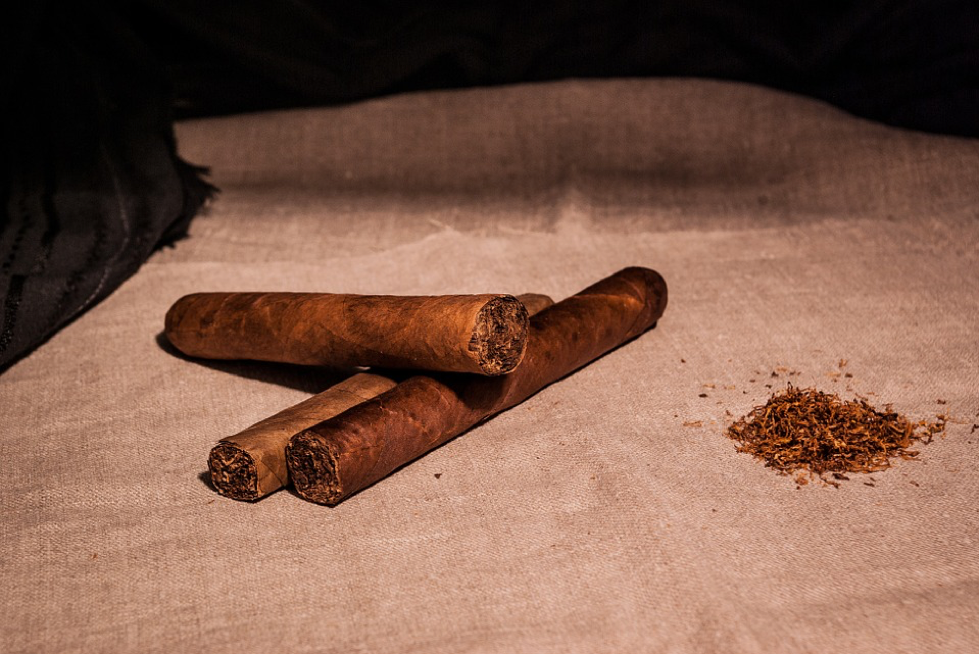
In the early 1800s, the United Kingdom joined forces with Spain and Portugal against the French in the Peninsular War. When the Peninsular War ended in 1814, the Spanish officers gifted the British with cigars to take back with them.
Those that smoked them were quite taken with cigars, and soon gentlemen’s clubs and members of high society were trying to source the very best smokes for themselves.
Around 1825, special coffeehouses emerged in London, known as cigar divans, which offered a place for smokers to go and enjoy a cigar in the company of other cigar enthusiasts. These spots were quite fashionable, and would commonly also feature performers, such as musicians and poets, to keep the smokers entertained as they puffed.
Smoking cigars was seen as a refined activity, and cigar lounges were constructed for gentlemen to meet in. To protect clothing from ash and smoke, and to add an extra hint of luxury, smoking jackets were worn to cigar lounges and when smoking at home.
Edward VII commissioned a blue silk smoking jacket in 1865, which he wore to many functions, helping to further popularise the garment.
Attitudes towards cigars and their popularity can be seen in the writings of many notable figures at this time. For example, in 1886, Rudyard Kipling published a poem called ‘The Betrothed’, in which he writes “a woman is only a woman, but a good cigar is a smoke”.
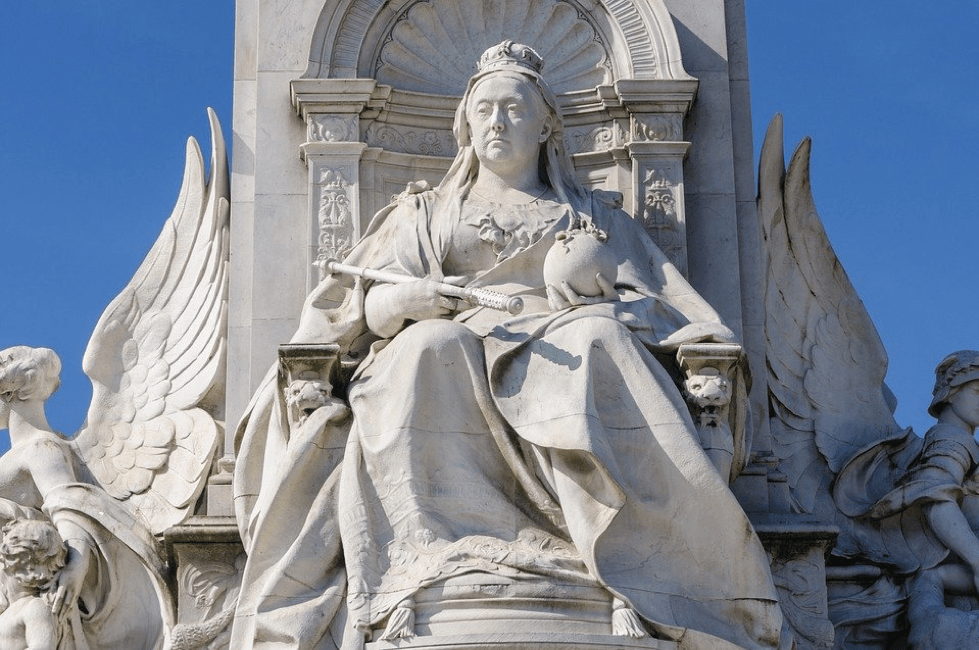
While the first half of the 1800s saw a big boom for the popularity of cigars and the cigar industry, things took a slight turn under Queen Victoria’s reign. Queen Victoria hated tobacco, to the point where she banned people from smoking in her presence and in royal premises.
At that time, royalty had a big sway on public opinion, and with her disapproval of tobacco came a slight shift in the popularity of tobacco products across the UK. While many continued to smoke, it was not seen as favourably as before by some and could contribute to a bad reputation as a woman.
Unlike his mother, King Edward VII was a fan of tobacco and broke the ban in 1901 at his coronation dinner by exclaiming ‘Gentlemen, you may smoke!’.

While cigarettes were available in the UK since the 1840s, cigars were preferred by many until the 20th-century. During the First World War, cigarettes were included in Army ration packs, and the disruption to imports reduced the availability of cigars.
As such, cigarettes became the more popular smoke. Fuelled by advertising campaigns that glamorised smoking cigarettes, these thinner smokes became the preference over cigars and pipes for many throughout the 20th-century.
The UK smoking ban in 2007 has been both a blessing and a curse for fans of cigars. While the ban prevents cigar lovers from enjoying a smoke in public spaces, it has led to the growth of cigar stores and smoking lounges, where enthusiasts can gather and enjoy a cigar together.
This has, in a way, led to a revival of cigar smoking in the UK, with the process now seen as something of a hobby by many. As one of only a few places where people can smoke outside of the home, some have even switched from cigarettes to cigars, so that they can enjoy the tastes of tobacco!
Did you know that we have our own cigar lounge in Windsor? Here you can enjoy a smoke indoors or out in our courtyard with fellow cigar enthusiasts!
If you were asked to think of a cigar-smoking icon, then the likelihood is you’d think of a man. People commonly associated with smoking cigars include the likes of Winston Churchill, Fidel Castro and JFK, with women rarely making the list of top famous cigar smokers. However, that is definitely not to say that they aren’t out there. Here we will explore the history of women and cigars, as well as some of the iconic women who have enjoyed them.
The history of women and cigars has fluctuated as times have changed. Historically, women in tobacco-growing regions smoked cigars, with Aztec women known to smoke, as well as reports of Peruvian women during the 16th-century smoking cigars. As cigars began to be imported and created around the world, they became associated with affluence and luxury, as such, important female figures were known for smoking cigars. Notably, Spanish countesses and duchesses were known for enjoying smoking cigars.
The Victorian era marked a shift in attitudes towards women smoking. Queen Victoria had banned cigar smoking in her presence, and with this came a shift in public opinion. It became unacceptable for women to be smoking, with the habit seen as a taboo and something that only prostitutes would engage in. When King Edward VII ascended to the throne, he broke this ban for men with the words “Gentlemen, you may smoke”.
The attitudes surrounding female smokers remained held by male cigar smokers and continued well into the 20th century. Rudyard Kipling famously stated, “a woman is only a woman, but a good cigar is a smoke”. Likewise, American director Samuel Fuller claimed that “a woman is just a script, but a cigar is a motion picture”, and Groucho Marx stating that “given the choice between a woman and a cigar, I will always choose the cigar”. While in some ways, this shows how much they love cigars, it also reveals how they believed women to be inferior to cigars – and perhaps, therefore, not worthy of smoking them!
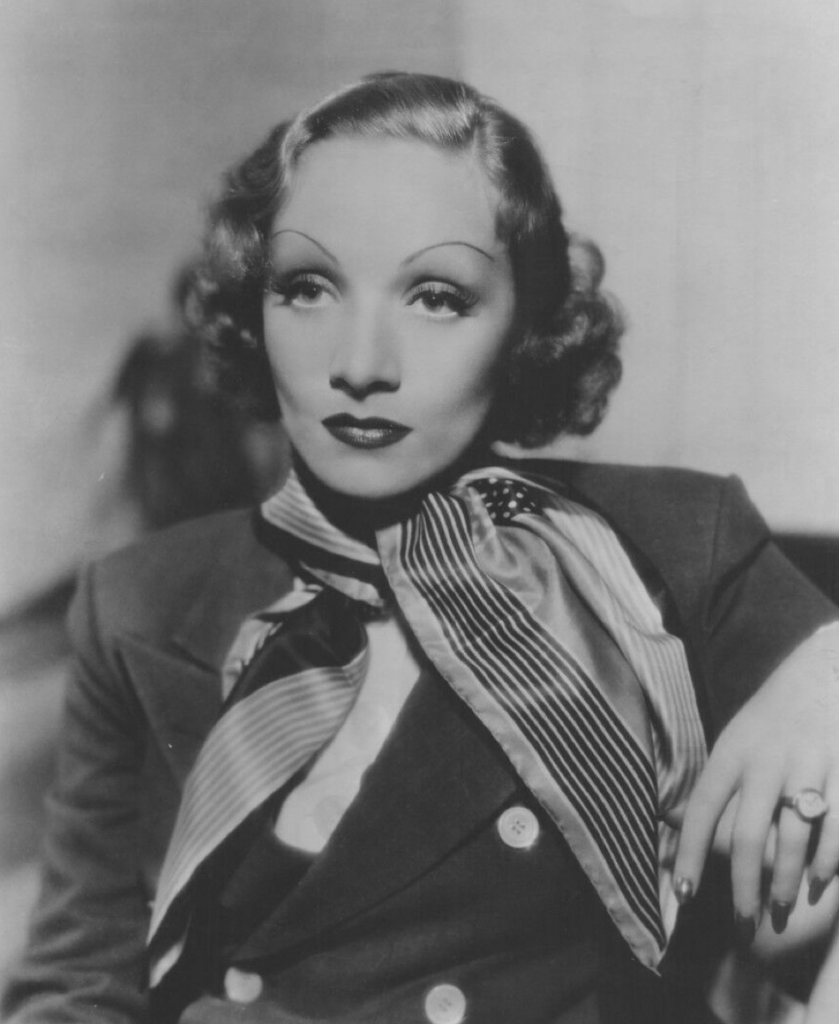
During the 1920s, there was something of a secret resurgence in female cigar smokers. Women-only cigar clubs cropped up, a hideaway for ‘progressive’ women, female artists and writers who loved to smoke. One such club was found in Berlin and is believed to be where Marlene Dietrich smoked before she moved to the United States. Dietrich can certainly be considered a cigar-smoking icon. Consistently challenging female stereotypes, Marlene Dietrich famously wore ‘men’s’ clothing and smoked both cigars and cigarettes. She even appeared smoking a cigar in the film ‘Touch of Evil’!
Throughout much of the 20th century, smoking, particularly cigar smoking, remained a hobby for men to partake in. This remains reflected in many of the practices and rituals surrounding cigar smoking; men enjoy a cigar together after a business deal, after the birth of a baby or during stag parties. However, things changed for women and cigars as the century came to an end.
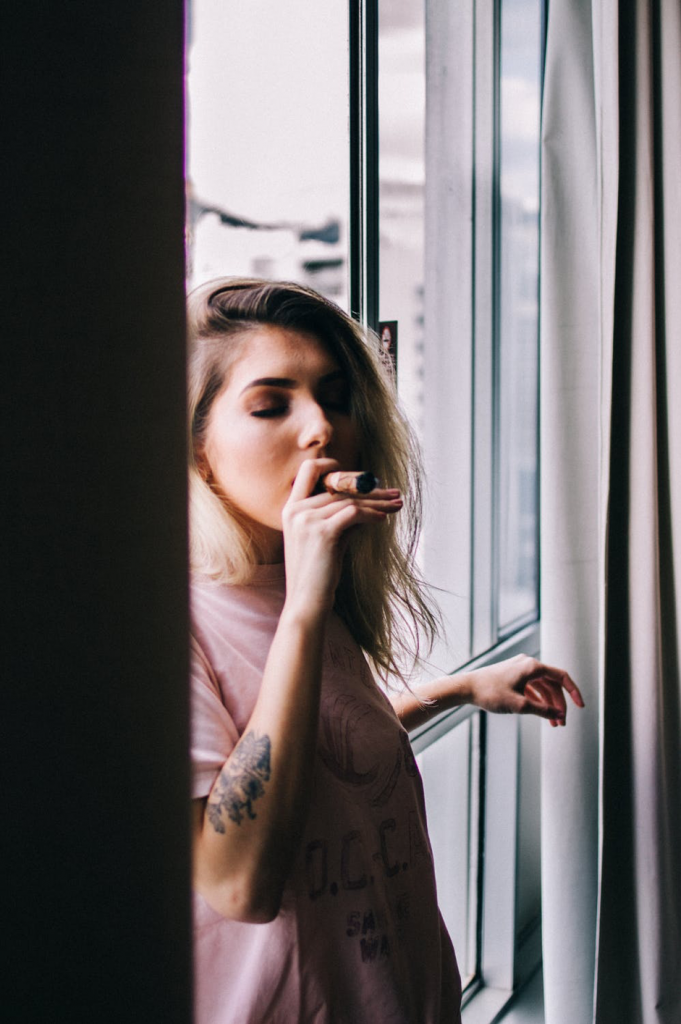
In the 1990s, there was a huge resurgence in the number of women smoking cigars. With cigar smoking seen as a symbol of high-status and luxury, many women took up the hobby, no longer fearing the repercussions of a damaged reputation that once faced women who smoked cigars.
Celebrities, including Demi Moore, Madonna and Whoopi Goldberg were all spotted and photographed while smoking cigars. More and more women took to smoking cigars; however, in places like the UK and US where women smoking cigars was unconventional, those that chose to smoke were seen as feminists and rebellious.

Image Credit: Shakira
With smoking bans put in place at the start of the 21st century, cigar smoking (and smoking in general) is a little less common than it once was. However, there are still many women who enjoy a stogie, including some famous faces! Rihanna, for one, has posed many times in photos and videos with a cigar in hand.
Other famous female cigar smokers include Beyoncé, the Kardashians, Ciara, Heidi Klum and Jennifer Lopez. The rise of social media has also led to an increased interest in cigar smoking, with many popular female cigar aficionados rising to prominence.
Cigar brands have also begun to try and appeal more to a female audience. Romeo y Julieta cigars, for example, released the Julieta cigar in 2011, which offered a far milder smoke for women. However, most female cigar aficionados agree that they have a preference for the same Cuban cigars that men like, and do not need a weaker cigar to enjoy a good smoke!
Are you a woman who loves cigars? Leave a comment letting us know which are your favourites!
No matter your reference points, cigars have almost always been associated with class or power since their commercialisation. From seeing Winston Churchill smoking his preferred Romeo Y Julieta sticks to Clint Eastwood and JFK, cigars, and the action of smoking one, suggest elegance, wealth and class. But how did it get this way? The way we have chosen to consume tobacco has changed countless times throughout the years and continues to change even today. Here, we’ll be taking a look at how public perception of cigars has evolved throughout history and the lifestyle of those that choose to smoke them.

It is widely believed that the Mayans were the first to create something that somewhat resembled a modern cigar, in around the 10th century. Early smokes were by no means what we enjoy today, with tobacco being wrapped in palm or plantain leaves and smoked.
Fast forward a few hundred years to the late 15th century and Italian explorer Christopher Columbus was introduced to the practise when he discovered the New World. From 1493 to 1503, he led four voyages across the Atlantic ushering in a new era of exploration. During his time on land, the local people introduced to him and his crew the practice of smoking tobacco, a habit which they all quickly adopted and introduced to their home nations upon return. Additionally, Jean Nicot, the French Ambassador to Portugal at the time, helped to popularise smoking in his home country of France, with the drug nicotine having been named after him. Subsequently, the takeup in smoking was rapid, with companies beginning to grow tobacco and mass-produce cigars too.
After Columbus claimed the land of Cuba for Spain, the fertile lands and ideal climate of the country were used to good effect, with Spain placing a monopoly on tobacco and establishing an industry dominance. The tobacco was distributed from Cuba across the continent of Europe and into Asia, cementing the practice of smoking into countless countries and creating an insatiable appetite for this newfound hobby.

Seen by many as the homeland for cigars, Cuba also had a hand in associating the hobby with a form of clothing. Estimated to have originated in the 18th or 19th century, a ‘guayabera’ is a form of long sleeve white shirt with four large pockets. Typically worn in summer, these shirts would have used to carry items such as cigars throughout the day. They were also worn by local farmers who grew guavas, bestowing the name guayabera based on the Spanish pronunciation of the fruit’ guayabas’. The shirt has since taken on a life of its own, with popular cigar brands now creating their very own versions perfect for carrying around smokes.
Around this time in Europe, the popularity of cigars would proliferate, especially among the more affluent of the population. The mid 19th century marked a turning point in cigar history, with the creation of cigar lounges that stocked premium brands of the smokes, such as Punch and Partagas. The rich were quick to associate the ownership and consumption of cigars with class, so began to purchase the smokes as an accessory. The smoking lounges, much like the coffee houses that came before them, were places for men to gather, smoke cigars and converse, either about business or leisure. Typically, suits or smart clothing would be worn on such occasions, accompanied by a smoking jacket which would protect clothing from falling ash and the smell of smoke.
The 20th century evidently was the final piece of the puzzle for cigars and the lifestyle they are now associated with. Culturally important figures adopted cigars as their smoke of choice, such as JFK and Winston Churchill, inadvertently associating them with power and an upper-class lifestyle that many could only dream of. Being able to smoke a cigar was a small connection to an idyllic life, perhaps leading to the popularity of more budget-friendly cigars.
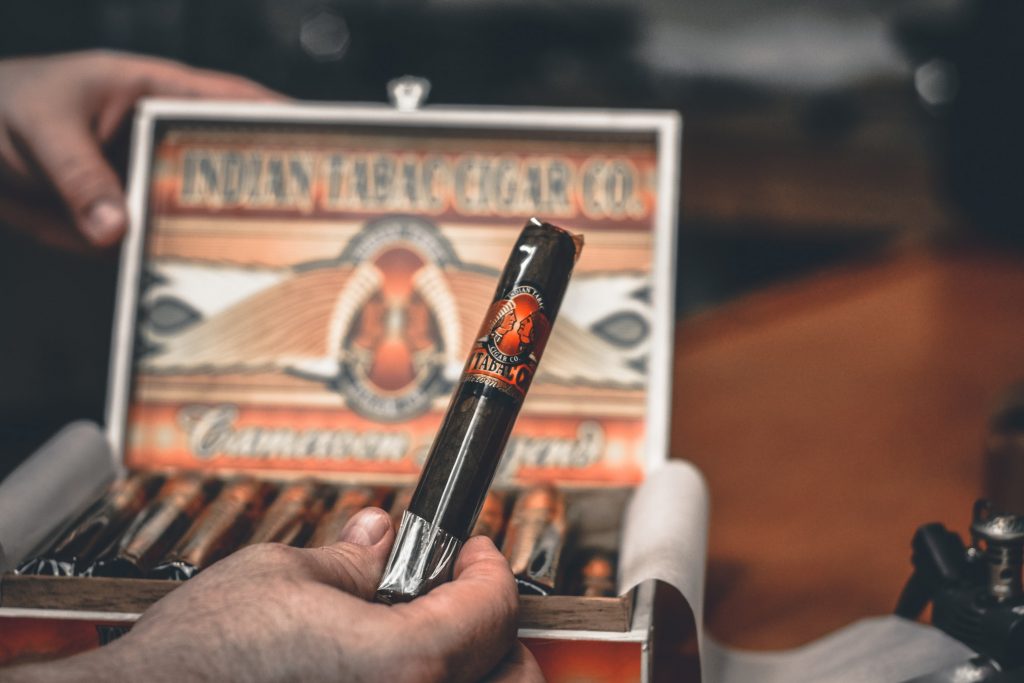
However, with the advent of cigarettes and the convenience of being able to consume tobacco by smoking in a quicker and easier way, cigars began to drop in popularity, especially among working-class people. That being said, cigars, even today, have retained a core segment of consumers that value quality over convenience. Still smoked by celebrities and public figures, although more seldom seen, cigars have preserved an air of elegance and style that cigarettes never offered. There has even been a resurgence in the creation of new cigar brands and products, with old and new companies alike striving to produce superior blends. To accommodate this, new cigar smoking locations such as lounges have opened in cities across the world. Even in the UK, with its strict smoking laws, there is a slew of indoor options that cater to those who want to enjoy a tasty smoke.
You can find the best places to smoke cigars in London right here on our blog, along with loads of useful tips on getting the most from your collection. Want to indulge in your own slice of elegance? Look no further than our range of Romeo Y Julieta cigars, Winston Churchill’s favourite!
Whether you’re considering on-screen fictional depictions or real-life situations, there has long been an association between cigars and the world of crime. Several factors have consistently linked cigar smoking to mobsters and the Mafia, and films regularly put cigars in the hands of the powerful and corrupt. So why has this connection between crime and a fine smoke been established? We take a look at the reasons behind cigars being seen as a symbol of crime.
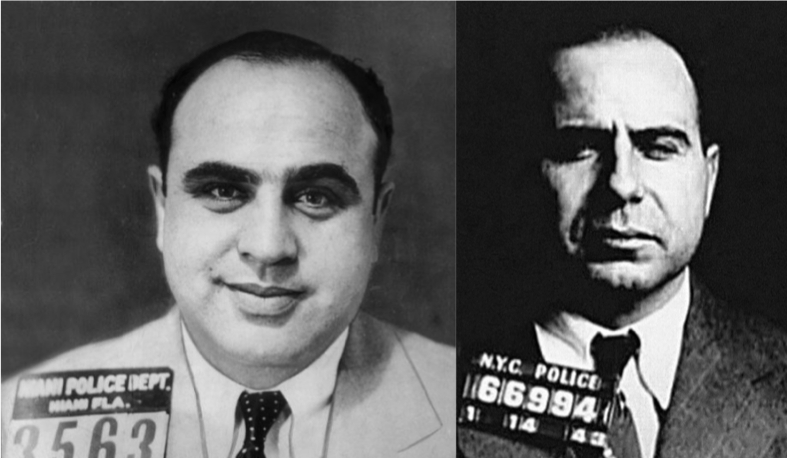
The basis for this connection between cigars and criminals actually largely comes from real-life origins. The list of infamous gangsters who were known for being avid cigar fans is quite long. In fact, many Mafia men and mobsters acquired nicknames based on their love for the smoke. Crime boss Carmine Galante was nicknamed ‘The Cigar’, as he was rarely seen without a stogie. The same is true for many more American mobsters and crime bosses. Sam Giancana was known as ‘Sam the Cigar’, Michael Coppola as ‘Mikey Cigars’ and Robert DeLuca as ‘Bobby the Cigar’ to name but a few.
One of the most famous gangsters in the world, Al Capone is perhaps one of the key reasons for the connection between cigars and crime. Like many other gangsters, Capone was a big fan of cigars and was photographed puffing on a fat smoke on several occasions. Because of this, there is even a line of cigarillos available named “Al Capone”.
Playing off the association between gangsters and cigars, there is often a recurring theme when it comes to the way cigars are represented in popular culture. In many cases in film and television shows, cigars will be smoked by the criminal, or by those who display questionable morals and violent behaviour. While there are some cigar-smoking heroes, for the most part, cigars are best known in the hands of characters like drug lord Tony Montana in Scarface, or the mobsters in Goodfellas and The Godfather.
The association with cigars and bad guys in films has also been developed from changing views towards smoking. While smoking was once seen as an acceptable habit, with the heroes of cinema often seen puffing away on a cigar or cigarette, health concerns have led to smokes disappearing from the hands of protagonists. Instead, this sense of danger and prohibition that comes with smoking is now added to the villainous characters as a prop.
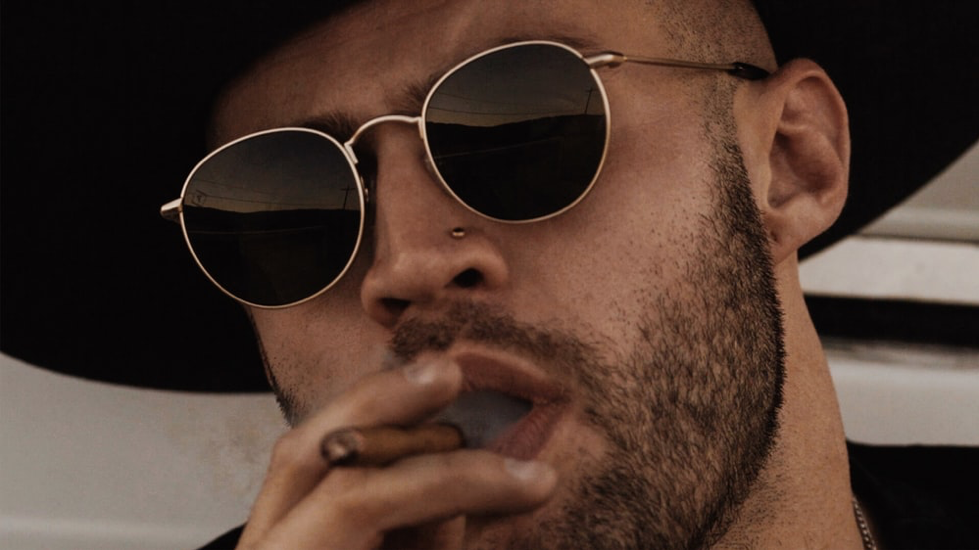
While those who enjoy the exquisite taste of a good Cuban won’t need to ask why someone would want to smoke a cigar, there are certainly several reasons why cigars have been used by mob bosses and to portray criminal intent.
A good cigar is the pinnacle of luxury and denotes wealth and power. It’s no secret that to keep up a smoking habit of quality cigars; you’ll need a little disposable income, so to be seen with a cigar so often you gain a cigar-related nickname indicates to others that you have the means. For gangsters, wealth and power go hand-in-hand, and cigars help those who smoke them to exude a sense of power.
Of course, there’s much more that a cigar can say about you. The sense of power, wealth and prestige that a cigar offers need not define you as a criminal! Instead, this power can be shifted into hero status, like Arnold Schwarzenegger in Predator and Will Smith in Independence Day in films, and political figures such as Winston Churchill and JFK in real life. If you’d like to experience all that cigars can offer, why not choose something from our extensive collection of smokes, such as a Montecristo cigar?
In February 2019, at the Festival Del Habano, Trinidad Cigars celebrated their fiftieth anniversary as part of the cigar industry. The celebrations were grand – as to be expected for a 50th – as Trinidad were one of the main featured brands of the Festival del Habano, and announced the release of five new cigars; three regular productions and two exclusive releases, including the 2019 Colección Habanos release. While this may be a fairly standard way to commemorate such an occasion, many cigar fans were a little confused by this, as the brand only became known to the wider public during the 1990s!
While Trinidad as a brand was established fifty years ago in 1969, the company has been something as a mystery to most, as their cigars only became available for public sale in 1998. Prior to that, Trinidad Cigars are said to have only been made for the purpose of being given as a gift to foreign diplomats by Fidel Castro. For most of the company’s existence, the only cigar produced by Trinidad was 7 ½ inches long with a 38 ring gauge and known as the Diplomatic Trinidad, due to its sole use as a diplomatic gift.
In 1992, Cigar Aficionado ran a piece that mentioned the brand, and for most, it was the first time that they had heard of Trinidad. Not only were general cigar lovers only just hearing about the brand, but even within the cigar industry, including executives within the government-run Cubatabaco, Trinidad was completely unknown. At this time, only 20 boxes of Trinidad cigars were produced each month. Each box was plain, made from cedar, and would contain 100 cigars, although none of these boxes were for sale. By 1996, changes were starting to be made in this process, as the boxes gained golf labels on the lids, and the number of cigars in each box was reduced to 50 or 25.
While Habanos claim that Trinidad have been around for only 50 years, the Trinidad family have a different story regarding their origins. By their version of events, the company was actually founded in 1905 by Diego Trinidad, and the company was known as Trinidad y Hermanos. At the time, the company primarily produced panatela-style cigars, as well as cigarettes. However, following the Cuban revolution, the company was taken over, and the family ended up leaving Cuba.

While not sold in stores, Trinidad cigars began appearing at auctions during the 1990s, with the first commercial auction taking place in May 1997. Here, a box of only 25 cigars sold for 16,100 Swiss francs, around 10,000 francs more than what was estimated. This works out to roughly £350 per cigar!
Following the success of the auctions, Trinidad cigars went on sale in Cuba in February 1998, with cigars becoming available in Mexico and Canada soon after. While the Diplomatic Trinidad had been the only cigar produced by the brand until this point, production of the Diplomatic ceased, and a new cigar, the Fundadore, was released instead. Measuring 7 ½ inches in length with a 40 ring gauge, the Fundadore cigar was finished with a pigtail cap that has now become an iconic feature of this brands’ collection.

By 2003, the brand was expanding following rave reviews for the Fundadore. Three new sizes were added to the collection; Reyes (4 3/8 inches, 40 ring gauge), Coloniales (5 ¼ inches, 44 ring gauge) and Robusto Extra (6 1/8 inches, 50 ring gauge). In 2009, the Robusto T, a 4 7/8 by 50 cigar was added, and 2014 saw the addition of the Vigía, a 4 3/8 by 54. All of these cigars featured the signature pigtail caps.
The 50th anniversary has seen many new sizes added to the brand; the Media Luna (4 ½ inches, 50 ring gauge), Esmeralda (5 ¾ inches, 53 ring gauge) and Topes (4 7/8 inches, 56 ring gauge). As well as these new brand regulars, the special limited edition Trinidad 50 Aniversario cigar saw something new for the brand. The first figurado shape for the brand, the cigar measures 6 1/8 inches by 59 ring gauge, with a smooth tapered end that does not feature the pigtail cap. This is also the first cigar in the Trinidad range to include a footband at the foot of the cigar. These special anniversary cigars will only be available in humidors, which each contain 50 cigars, with only 100 humidors to be sold.
We think the best way to learn about cigars is to give them a try yourself! If you would like to discover more about Trinidad Cigars, then why not check out the range we have available in stock here at Havana House?!
Image Credit: habanos_oficial
Cigar smoking tends to lend itself to moments of calm, allowing you to sit back in a chair, as the luxurious smoke swirls around you, and have a good think about things. If you’re a fan of Cuban cigars, you may have thought about where they come from and how they have gained such a good reputation. With a long and complex past, we delve into the fascinating history behind Cuba’s cigar industry.
In today’s world of cigars, you’d be hard-pressed to find a cigar that didn’t come with its own distinctive band. Today, the band denotes the brand. Cohiba cigars, for instance, can be identified by vibrant yellow, paired with black and white squares on the band.
However, cigars historically didn’t always come with bands, and it is still debated today exactly how they came about. Below are three legends about how the cigar band became established. Which story do you believe is correct?
Passed from smoker to smoker as they sit together enjoying a stogie or two, these urban legends have proved popular amongst cigar smokers for many years. Whether or not these stories are true, the legend lives on. Here are some of our favourites!
Tales of the Cigar Arsonist (or Cigarsonist, as we would like to call him!) have been circling the web since the 90s and is one of the most popular urban legends amongst cigar smokers. This tall tale is all about one man attempting to smoke for free. He bought himself a box of 24 very expensive rare cigars, and somehow insured them against damage, including fire! Having smoked the boxful, he filed an insurance claim, stating that ‘a series of small fires’ had destroyed them. When the insurance company refused to pay, the man sued them and won, as they had been insured against fire. He was paid $15,000 for the rare cigars.
However, after the ruling was made, the insurance company had the man arrested on 24 counts of arson! Using the testimony from the insurance claim case as evidence, the man was convicted of burning his rare cigars intentionally and was sentenced to 24 consecutive year-long prison terms for arson!
Those aware of American history will know that, until recently, Cuban cigars have not legally been allowed into the States, following the trade embargo, which began in 1958. Kennedy, while not a fan of Fidel Castro, causing the embargo to commence, was however very into his cigars. His favourite was the H. Upmann Petit Corona, and upon realising that cigars would no longer be traded with America, rumours state that JFK’s press secretary was sent off to require as many as possible before the legislation was finalised. Around 1,200 of these cigars were brought back for the President; more than enough for a few years of casual smoking
Unfortunately, though, the next year would see Kennedy’s assassination, meaning that he never got the chance to enjoy all of his secret stogies! Further revelations will certainly drive American cigar smokers mad, as it is believed that Kennedy had even attempted to make cigars exempt from the embargo, meaning that Cuban smokes could have been legally enjoyed for all this time!

A myth that has plagued the cigar world since the 1940s, most cigar lovers will have heard the rumour that Cuban cigars are rolled on the thighs of virgins. This legend originates from when a journalist visited a Cuban cigar factory and witnessed a group of women sorting and grading the tobacco leaves, and placing them in piles accordingly on their laps.
Some artistic liberties were obviously taken in the write up of the piece, as this was translated into the cigars themselves being rolled on a virgin’s thighs! While they may well have organised the leaves on their legs, they certainly wouldn’t have rolled the cigars on them. In fact, cigar experts claim that you simply would not be able to successfully roll a cigar on a thigh!
A myth spread around the smoking community that if you saved enough cigar bands, cigarette boxes or the tops of coffee jars, they could be traded in for items required for people in need. As the charitable myth stated, 50,000 empty cigarette packs would provide someone with a new hospital bed, whereas 10,000 cigar wrappers could buy a wheelchair.
Soon, cigar wrappers became saved almost religiously, although with the minimum goal being 10,000 no one was ever able to actually give back for charity! To this day, many cigar smokers keep their wrappers; however, this may now be more for personal collection purposes!
Another former US President makes it onto the list of cigar-based urban legends, with the tale of President Franklin Delano Roosevelt and the exploding cigar. Roosevelt had been invited to give a speech at a graduation speech, where he was also awarded an honorary degree by the school dean, who was an old friend of his. To thank him for the honour, Roosevelt awarded the dean with a cigar.
After a month or so, FDR called the dean to ask if he had enjoyed the smoke; however, the dean responded that he had not smoked it as he was saving the cigar as a memento. Rather than smoking it, the cigar was passed down the generations until a descendant of the dean smoked it, unaware of who the cigar had initially come from. The cigar smoked normally for a moment, before exploding in the smokers face; a joke many decades in the making from the former President!
Which of these urban legends do you reckon are true? Let us know in the comments below or via our social media channels. Buy cigars online so you can enjoy a smoke with your friends as you tell them these tales!
Tubed cigars are just as entwined with the Cuban cigar scene as cedar humidors, labelled hand-crafted boxes and elegant accessories, but do you know when they first appeared and how?
For centuries, cigars have served as iconic accompaniments for men of wealth and power. Many famous figures such as Winston Churchill, Al Capone, and Alfred Hitchcock would seldom be seen without a signature stogie protruding from their mouths, each a top dog in their profession (legal or not). But what exactly has made the cigar such a prestigious symbol in the male corporate world? Below, we take a look at the history of these now iconic objects.